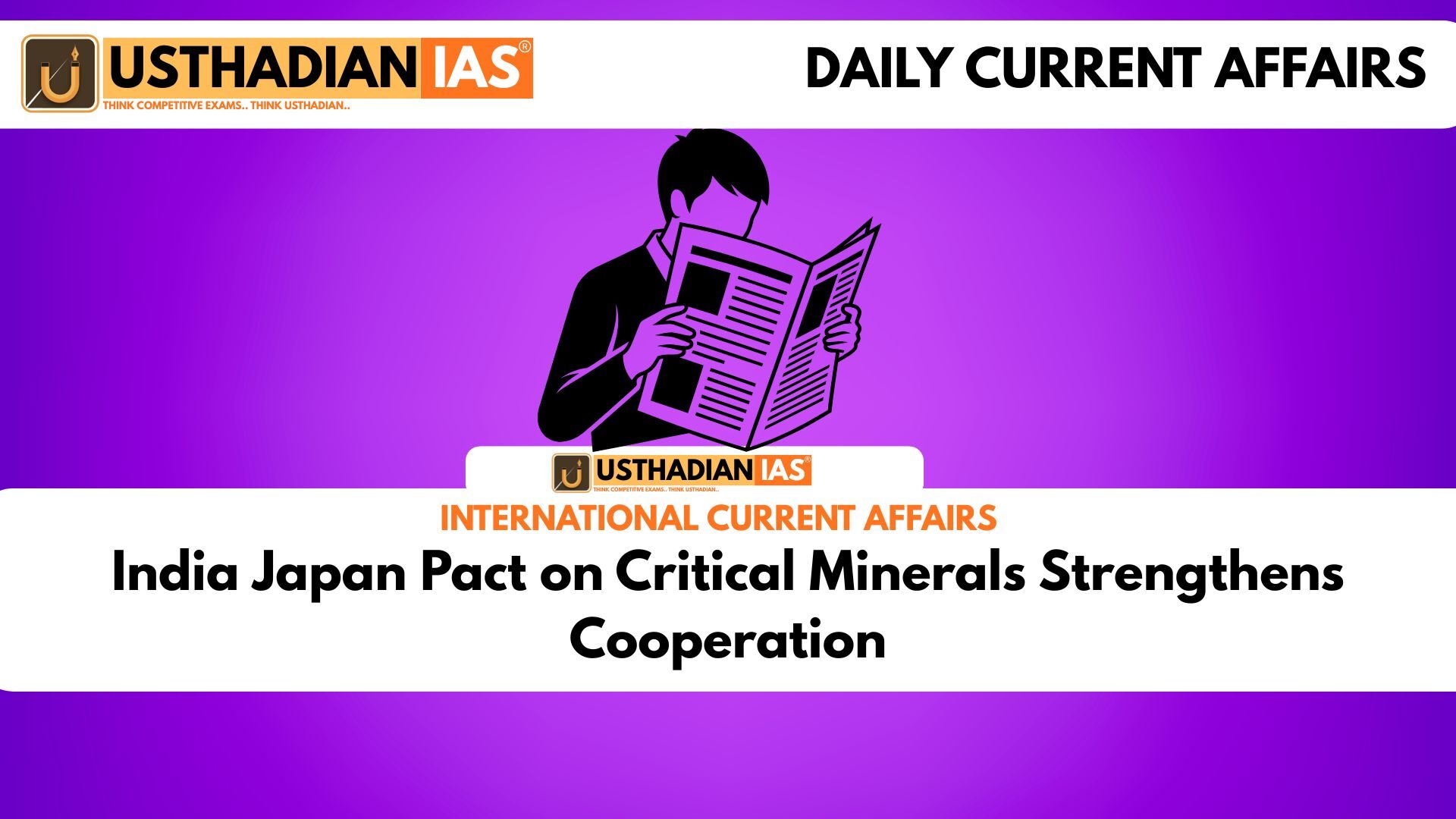Why Critical Minerals Are Crucial
India Japan Pact on Critical Minerals Strengthens Cooperation: Critical minerals form the backbone of modern industries, powering renewable energy systems, advanced electronics, and defense technologies. With rising global demand, nations are competing to secure stable supplies. Both India and Japan are import-dependent, making cooperation essential for long-term resource security.
Static GK fact: Rare earths, part of the critical minerals group, are indispensable for magnets used in wind turbines and electric vehicles.
Highlights of the Agreement
During the 15th Annual India-Japan Summit in Tokyo, leaders finalized a Memorandum of Cooperation on critical minerals. Key elements include:
- Collaborative mining and exploration projects in India and other partner nations
- Policy and regulatory dialogue for smoother cooperation
- Sustainable deep-sea mining practices
- Building reserves to ensure mineral stability
- Joint work on processing technologies and innovation
This pact reduces overdependence on dominant exporters and strengthens both nations in the global technology race.
Focus on Investments and Startups
The agreement is aligned with Japan’s commitment to channel 10 trillion yen into India over the next decade. A significant part of this collaboration will support startups and MSMEs, enabling them to become drivers of innovation in mineral processing and clean energy technologies.
Static GK fact: Japan has been one of India’s most consistent economic partners, ranking among the top five investors.
Roadmap for the Next Decade
India and Japan have drawn up a ten-year vision resting on eight cooperation pillars. These include investment, innovation, energy resilience, environmental sustainability, advanced technology, mobility, healthcare, and state-level partnerships. The mineral pact aligns with these pillars and enhances their joint standing in the Indo-Pacific strategic framework.
Broader Strategic Impact
The cooperation highlights a shared vision for clean energy transition and economic resilience. It strengthens their role in global value chains and supports initiatives like the Quad grouping. By pooling expertise and resources, both countries are positioning themselves as key players in the global shift to sustainable technologies.
Static GK Tip: India set up Khanij Bidesh India Ltd (KABIL) in 2019 to secure overseas sources of critical minerals.
Static Usthadian Current Affairs Table
India Japan Pact on Critical Minerals Strengthens Cooperation:
| Topic | Detail |
| Event | India and Japan signed a Memorandum of Cooperation on critical minerals |
| Summit | 15th India-Japan Annual Summit in Tokyo |
| Leaders | Prime Minister Narendra Modi and Japanese leadership |
| Focus | Supply chain resilience, clean energy, technology collaboration |
| Investment Target | 10 trillion yen Japanese investment in India over 10 years |
| Strategic Areas | Exploration, mining, deep-sea mining, stockpiling, technology transfer |
| Rare Earths | Vital for batteries, semiconductors, solar, defense |
| Japan’s Role | Fifth-largest investor in India since 2000 |
| Roadmap | Eight pillars of cooperation including economic and resource security |
| Agency | KABIL working on securing overseas mineral assets |








